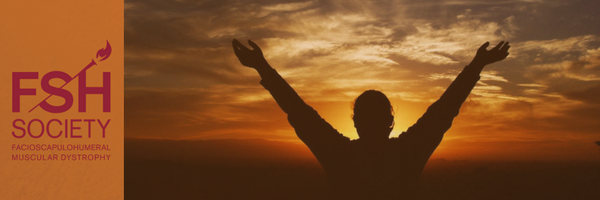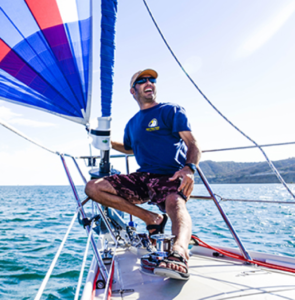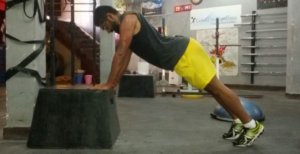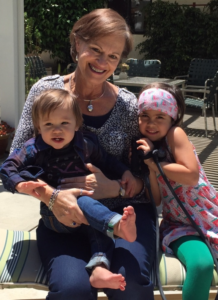
As we come up on the last days of 2016, we are taking one final look back on the incredible year it has been, and one last moment to recognize those who have shared their inspirational stories, strength, and commitment to continue to do the things that they love. As we mentioned in Part 1 and Part 2 on our blog, we are sharing stories we received throughout the year from fellow FSH Society members that demonstrate how they won’t let FSHD stand in their way.
Your support is life-changing to those in the Society – and with your continued dedication to finding a treatments and a cure.
Continue reading below to hear the stories of Ryan, Aditya, and Lynne on how they are raising awareness, doing what they love, and how the Society has helped them along the way!
 Ryan Levinson: Most of my life has been defined by highly physical activities. I made my living as a SCUBA and sailing instructor. I worked as a lifeguard at extreme surfing events, competed in triathlons, raced paddleboards, and many more activities that have become much more difficult or impossible as I continue to lose muscle. This happens to everyone at some point but for “us” it’s much sooner than later. I remember what it felt like to do these activates- surfing big waves, running, hiking up mountains- and sometimes I have dreams where I’m doing them. I am still grateful to live a physically active life, but the challenges I face are often reminders of our disease and the losses to come.
Ryan Levinson: Most of my life has been defined by highly physical activities. I made my living as a SCUBA and sailing instructor. I worked as a lifeguard at extreme surfing events, competed in triathlons, raced paddleboards, and many more activities that have become much more difficult or impossible as I continue to lose muscle. This happens to everyone at some point but for “us” it’s much sooner than later. I remember what it felt like to do these activates- surfing big waves, running, hiking up mountains- and sometimes I have dreams where I’m doing them. I am still grateful to live a physically active life, but the challenges I face are often reminders of our disease and the losses to come.
People like you are a reminder that we’re not alone in our suffering, nor our hope for a cure. Thank you.
Ryan and his wife Nicole are documenting their sailing adventures through the South Pacific at twoafloat.com.
 Aditya Bhatia: I was diagnosed with FSHD in 2012 and before then, I came from a background of being an obese individual with no hint of the disease, ever. I decided to become a para athlete with this condition and in the last four years I have tirelessly worked towards it. I was able to transform myself and my body and have plans to push my training to the next level.
Aditya Bhatia: I was diagnosed with FSHD in 2012 and before then, I came from a background of being an obese individual with no hint of the disease, ever. I decided to become a para athlete with this condition and in the last four years I have tirelessly worked towards it. I was able to transform myself and my body and have plans to push my training to the next level.
I also started writing a blog to track my progress—from the start to today—with the hopes that it will show readers the changes training to be a para athlete can have on your body and show others with FSHD that it is possible!
Aditya is featured in this article that was published on an online fitness blog, and shares his journey and helps others manage fitness with FSHD on his Facebook page.
 Lynne Carmichael: My father was diagnosed with adult-onset muscular dystrophy (now identified as FSHD) when he was in his thirties, although he had symptoms earlier. He is the first in our family known to have FSHD. One of my brothers also has FSHD and so does my daughter.
Lynne Carmichael: My father was diagnosed with adult-onset muscular dystrophy (now identified as FSHD) when he was in his thirties, although he had symptoms earlier. He is the first in our family known to have FSHD. One of my brothers also has FSHD and so does my daughter.
While going through neurological testing when she was in college, we discovered the FSH Society. In their newsletter, I saw opportunities to participate in clinical trials to help scientists and doctors learn more about this devastating disease. Through the help of FSH Society funds for reimbursement, I was able to participate in several studies (e.g., muscle biopsy, MRI, blood samples) at Kennedy Krieger in Baltimore.
Another way that the FSH Society has been helpful is that it opened channels of communication with my father and the rest of my family. My father even asked me to help get him on the mailing list for the FSH Society newsletter! Had it not been for the FSH Society, this level of communication in our family would not have been reached.
Our whole family would like to thank the FSH Society for their role in helping us deal with this disease, for the committed professionals in research, and for their overall support. It is comforting to know that through their work, treatment (or maybe even a cure!) is around the corner.
Thank YOU for making a difference! With your continued support, we can continue our work to push toward treatments and transform the lives of thousands of individuals and families living with FSH muscular dystrophy – as they all reach for and achieve their own victories!


Leave a Reply